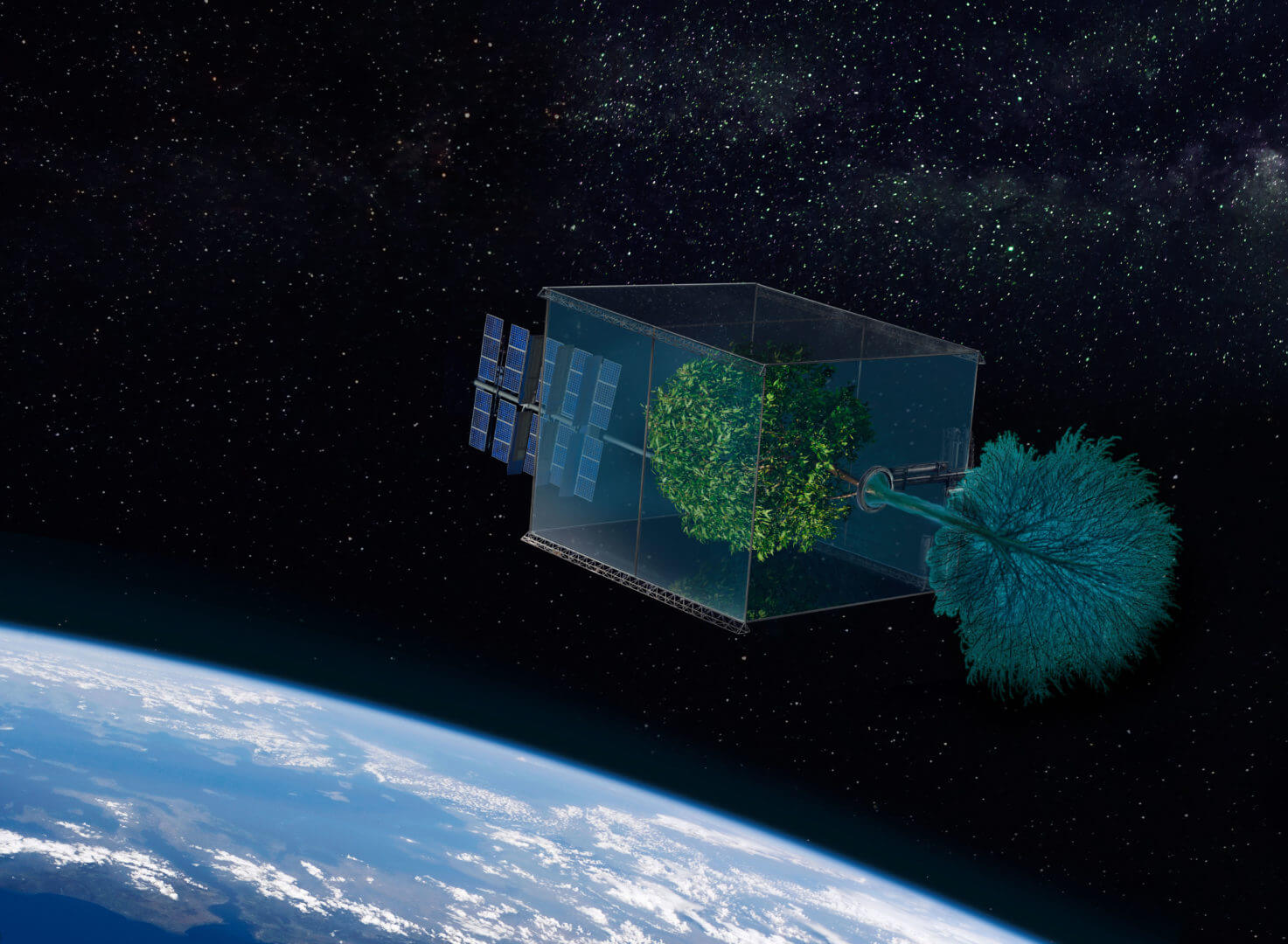A Tree Grows in Space
Space platforms, typically called satellites or spacecraft, are generally complex to build on the ground, expensive to launch and obsolete in a decade or less. They typically end up as space junk, floating in orbit around the planet.
But is that the way it has to be?
That’s the question that David Barnhart, director of USC’s Space Engineering Research Center (SERC) and lead for the Space Systems and Technology group for the USC Information Sciences Institute (ISI), is contemplating. More specifically, what if we could “grow” spacecraft, repurpose a hybrid of inorganic and organic materials and even allow food to grow in space?
In a paper co-written with colleague and collaborator Nicole Livia Atudosiei of Bioterra Bucharest University, Barnhart discusses an alternative to creating space platforms with manmade materials, coupled with possibility of transporting food into space. He writes about what he calls “bioterran capability in space” or “growing the environment itself.”
This could mean growing a platform for a spacecraft in outer space and/or growing the food astronauts could consume. The paper, “Growing Life in Space: Sustainable Bioterra for Mankind’s Future on Earth and in Space,” was presented in September at the Institute of Agricultural Economics of the Romanian Academy at the Faculty of Management Agrotourism.
“If we can clone sheep and land humans on the moon, we should be able to solve the challenges to grow a tree in space,” Barnhart said.
But why? One issue is cost. While it may cost the same to put organic and manmade materials into space, Barnhart thinks the organic materials could be repurposed once in orbit as a source of food for astronauts or as additional physical platforms that could augment tomorrow’s satellites.
Barnhart, who has worked on such successful space enterprises such as designing satlets — essentially interchangeable, Lego-like pieces that can be used to create space platforms of any size, shape and volume at a fraction of the cost of traditional systems — manipulative robotic arms for spacecraft and the introduction of revenue streams for satellites, agrees.
“Peers might laugh at this idea,” Barnhart said.
Some other “out-there” ideas in their time: Airplanes. Personal computers. Cell phones.
For Barnhart, the idea to grow space platforms came out of an earlier project to rethink the manmade structure of satellites and how to assemble them. Currently, satellites and space platforms are monolithic, he said — that is, built out of pieces into a single entity. As such, there is no way to modify, change, adapt or fix them once in orbit. Barnhart thought a new approach was needed.
For that project, Barnhart found inspiration in biology, coral reefs and jellyfish in particular. It led to the design of satlets, or self-contained, connectable modules, that Barnhart said will see their first flight early this year. These satlets may enable some amazing new concepts, including incredibly large antennae farms and solar power stations for space.
Barnhart envisions a space platform that is grown in orbit with hybrid organic and manmade materials — for example, using a genetically modified Australian eucalyptus tree altered to withstand freezing temperatures. The idea combines various disciplines at the intersection of biology, mechanics and digital systems.
“Cells are beautiful and amazing. They have the ability to attach to each other without any preconceived structural configuration, and they self-aggregate into complex systems autonomously,” Barnhart said. “How do we make the outside of currently clunky mechanical spacecraft to something like a cell that expands and contracts seamlessly, to allow more cells to attach and grow to any size in space?”
While it may seem odd to consider growing trees in space, Barnhart and Atudosiei said scientists already imitate nature for satellite functions. Heat pipes in large satellites use fluid to transfer thermal energy similar to the ways trees do for nutrient transport, for example.
While actually growing organic material openly in the vacuum and temperature of outer space today is not possible, scientists could take initial steps toward that goal — one of which may be to grow existing species encapsulated by a material such as aerogel in a protected layer or cocoon to withstand the extreme conditions, Barnhart said.
Another idea is to engineer entirely new species of genetically modified flora and fauna that could exist in the extreme thermal conditions in space, with new methods to provide oxygen and nutrients.





